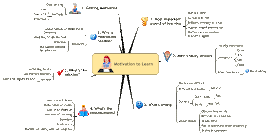With a dream, information is easy to process into knowledge. Money to reach our dream also becomes easier to acquire. People with a dream act differently, they seem to have meaning and purpose to their life. Bosses and customers favor positive attitudes and offered opportunity, which means higher income, usually. An upward spiral of high intensity motivation and opportunity continue to follow.
In the formal education world, most technical colleges require students to have a GED certificate or better before they can learn welding or machine shop skills. This system requires all people to be an intellectual before they are allowed to develop dreams. As a result, most would-be welders or machinists, who are technical, never have a chance. What if windjammer-training programs required all students to have a GED certificate and, required all students to read a compass and plot a course before they could come aboard? There would be empty ships, never developed dreams and lost opportunity. Experience builds dreams and a dream motivates people to learn.
Technical colleges are intended for technical people who learn differently than intellectuals. Instead of heavy academic requirements, build dreams first, and then insert academics as students discover the need for them. The concept "opportunity first then knowledge" motivates people to learn. It works aboard windjammers, why not in school?
source: motivation-tools.com/elements/develop_a_dream.htm



